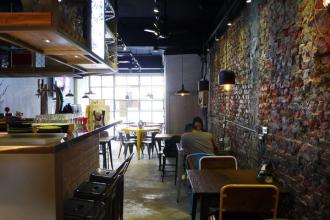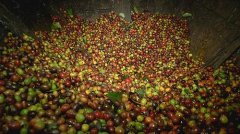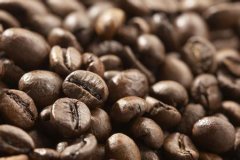Unique flavor of Sidamo Coffee Manor Ted Manor Coffee Grinding degree roasting degree treatment method

During the harvest, farmers harvest fresh red fruit every day, and every two days the coffee fruit is sent as a unit or sold to a water washing plant for treatment. coffee fruit without a water treatment plant is usually naturally fermented for about 12 hours, and then passed through the sun for drying and shelling. in any case, farmers always try their best to send them to the water treatment plant for treatment. In order to sell better under the name of "washing treatment", in the water wash, coffee cherries soften the pulp after soaking and fermenting for about 12 hours, then pass through the waterway and stir to separate the pulp from the coffee beans. the pulp is discharged with the floodgates, while coffee beans need six days of sunshine to dry, but the processing time is only from sunrise to 11:00 and from 03:00 to sunset. The water content of raw beans after treatment should be about 12% ~ 12.5%. After selecting residual beans or shoddy beans, they are packed in sacks and trucked to the coffee auction house in the capital, Addis Ababa.
There are many water treatment plants on the main roads of coffee producing areas, especially in Jima area, and a large number of treatment plants are not fully utilized because of the fierce competition, so the person in charge of the treatment plant pays a higher price to the farmers, but worries about whether they can make a profit. Nowadays, a kilogram of raw beans usually sells for about 2 Birr (Ethiopian units). During the whole harvest period, the employees of the treatment plant worked for two months without a rest day, with a daily production capacity of about 10 bags per farm.
It is a high-end coffee that is difficult to compare with the general mocha. It has unique fruit aromas of citrus and lemon, with aromas of jasmine, sour taste similar to wine, clean and unmixed taste, just like freshly boiled citrus fruit tea with a long finish. Full of floral and citrus aroma, the performance is exciting, moderate roasting has a soft sour taste, deep roasting gives off a strong aroma, rich and uniform taste is the most attractive feature of Ethiopian Yega snow coffee, known as the best coffee beans in Ethiopia, is the representative of East African boutique coffee, and Yega snow coffee is the most unique coffee in the world today.
Ethiopia is rectangular, with a ratio of length to width of 3:2. From top to bottom, it is composed of green, yellow and red parallel equal horizontal rectangles, with the national emblem in the middle of the flag. Since the end of the 19th century, Ethiopia began to use the green, yellow and red cross-striped national flag. In modern history, Ethiopia is the first African country to join the forest of free nations. [8]
In the fifties and sixties of this century, many African countries became independent one after another and adopted green, yellow and red as the colors of the national flag, so they were called "pan-African colors". Ethiopia is one of the ancient countries in Africa, with a long history of more than 3000 years, giving green, yellow and red colors deeper roots in this land. Historically, they are closely related to the liturgy of the Coptic church, and are worshipped as the symbol of the trinity of the Father, the son and the Holy Spirit, reflecting the three virtues of loyalty, hope and kindness advocated by human freedom. These three colors also represent three regions of Ethiopia: Tikleh (red), Amhara (yellow) and Theo (green). Green represents fertile land, mild climate and rich plant resources, as well as hope for the future; yellow symbolizes peace and fraternity, as well as the people's determination to build the country; and red symbolizes that the people are ready to shed blood and sacrifice to defend the motherland.
There is no national emblem on the original national flag. On August 22, 1995, the Federal Democratic Republic of Ethiopia was established, and the national emblem was added to the center of the new national flag. [8]
National emblem
The Ethiopian national emblem is round. A glowing golden five-pointed star on a round blue face. Blue symbolizes peace; the pentagram represents diversity and unity, and the light symbolizes prosperity and prosperity. The whole symbolizes the hope and nationality of the country, and the equality, unity and harmony of all religious ethnic groups.
Coffee is Ethiopia's main economic crop and the country's largest crop export and important industry. It accounts for 60% of Ethiopia's total export value and supports many small farms, as well as sugar, bananas and cotton. It is also Ethiopia's largest and important commodity export crop after oil, and it is also the largest export of Elaraby in Africa, with a total value of about US $300 million in 1997. in terms of total production, 94% are small farms and 6% are government agencies. because many farms are scattered and grow other crops, it has been difficult to integrate the figures correctly. However, the country's official coffee cultivation area is at least 400000 hectares, and the Ethiopian government encourages local farmers to improve their quality and productivity so that coffee farmers can expand their business scale and increase production capacity and exports.
Important Notice :
前街咖啡 FrontStreet Coffee has moved to new addredd:
FrontStreet Coffee Address: 315,Donghua East Road,GuangZhou
Tel:020 38364473
- Prev

A brief introduction to the History and Culture of the Origin and Development of Coffee in Ted Manor
The most distinctive flavor found in all Sidamo coffee is lemon and citrus with bright and crisp acidity. This Ethiopian variety is native to Heirloom. As an ancient high-quality coffee variety in Ethiopia, native species can always show a unique style in various Ethiopian origins! Interestingly, compared with the usual Ethiopian coffee beans
- Next

Sidamo Coffee Manor Ted Manor Coffee Variety planting Market Price is simple
The coffee in this region is quite unique, and the coffee produced has often attracted the attention of the market. The legendary nekisse of Ninety Plus comes from Nectar from shakisso in Shaquiso. Its producing area and name all come from Shaquiso Shakisso Sidamo, which is a famous boutique coffee producing area in Ethiopia.
Related
- Does Rose Summer choose Blue, Green or Red? Detailed explanation of Rose Summer Coffee plots and Classification in Panamanian Jade Manor
- What is the difference between the origin, producing area, processing plant, cooperative and manor of coffee beans?
- How fine does the espresso powder fit? how to grind the espresso?
- Sca coffee roasting degree color card coffee roasting degree 8 roasting color values what do you mean?
- The practice of lattes: how to make lattes at home
- Introduction to Indonesian Fine Coffee beans-- Java Coffee producing area of Indonesian Arabica Coffee
- How much will the flavor of light and medium roasted rose summer be expressed? What baking level is rose summer suitable for?
- Introduction to the characteristics of washing, sun-drying or wet-planing coffee commonly used in Mantenin, Indonesia
- Price characteristics of Arabica Coffee Bean Starbucks introduction to Manning Coffee Bean Taste producing area Variety Manor
- What is the authentic Yega flavor? What are the flavor characteristics of the really excellent Yejasuffi coffee beans?

